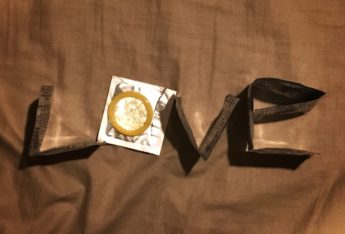A common question regarding HIV testing is: “When should I go for one?” Some say HIV testing should be done regularly, at least once a year. Others say it has to be twice a year, and there are those who say it should be done quarterly. None of them are wrong, but none of the statements are entirely correct either. This is because the correct time a person has to undergo HIV testing depends on his/her actions and behaviors. But for us to understand the relevant factors to determine the correct timing, we have to learn and understand the concept of the window period.
The Window Metaphor
The “window period1” is the time between a potential exposure to HIV infection and when an HIV test will give an accurate result with the appearance of detectable antibodies2.
The same as how “the birds and bees” metaphor is used to explain sexual intercourse to children, we could use an actual window to explain how the window period works. The image below shows four boxes with the same scenario with one month progression. The first box shows the condition of the plants in the pots numbered 1, 2, and 3 at the end of 1 month, box two for the end of the second month, and boxes three and four for the end of the third and fourth months, respectively.
The plants shown were planted at the same time. Depending on the condition of the soil in the pot, the amount of water, the amount of sunlight, and several other factors (even the kind of seed planted), the rate of growth of each plant would differ. Plant number two reached the “window” first. This could be interpreted as early detection of HIV even before getting past the window period. Plant number one reached the “window” on the fourth month, which could be compared to detection after the window period of three months, while plant number three never reached the window, which shows a negative result despite having exhausted the minimum number of days.
Many advancements in HIV testing have already been developed with high probability of showing positive results when the person is infected (sensitivity), and high probability of showing negative results when there is no infection (specificity). Generally, we have two types of HIV testing methods: rapid tests and RNA tests. A rapid test is an immunoassay, which detects the presence of antibodies or antigens[2] in blood or oral fluids. This kind of test produces results in 30 minutes or less which makes it ideal for screening purposes. RNA tests detect the presence of the virus itself. However, this kind of testing is not recommended for HIV screening because it is more expensive, it requires more apparatus to conduct, and it takes more time to generate results.
Proteins and Antibodies
Our body has a natural response to unidentified substance entering our bodies, like bacteria, viruses, toxins, etc. This is called our immune response. Often, when we search online for information regarding HIV testing, the words antigens and antibodies appear, or they are normally mentioned in discussions regarding HIV in general. Just to have enough information to understand the window period more: An antigen is usually a type of protein on the surface of cells, fungi, bacteria, or viruses, which causes the body to produce antibodies against the unrecognized substance in our body; an antibody is also a protein produced by our body’s immune system when it detects unknown harmful substances (antigens).
During the duration of the window period, antigens are the ones being detected by the tests in the first few days or weeks after a potential exposure. In the early stages of infection, there is a rapid multiplication of antigens in the body, which also means that infected people in the window period are highly infectious. After some time, seroconversion3 will occur. This is when the body generates antibodies as an immune response to the HIV antigen present in the body. This is also when HIV tests may give false negative4 results.
Antibodies attach to antigens, and the only time when either of the two will be detectable by tests is when one of them is more than the other. During seroconversion, the number of antibodies will be close to the number of antigens, and not having enough “free” or “unbound” antigens and antibodies in the body will cause both to be undetectable. Only after the window period will the amount of antibodies surpass that of the antigens, and from this point on, only antibodies will be detectable during tests.
MESSEd Up Information
As with a separate article that talks about practical ways on how to determine whether a person is at risk of HIV transmission, digging further into antigens and antibodies might lead to more confusing information than answers to questions. Basically, being aware of one’s own sexual activities, or other activities that could expose himself to the virus, is the first step in observing Timely Testing.
By using ESSE (Exit, Sufficient, Survive, Entry) as a reference to know what the basic criteria for HIV transmission is, it is best to undergo testing after the window period of three months has passed. However, if a person is constantly within the boundaries of the window period, he may opt to have himself tested in regular intervals of three months. For a person who is sexually active yet always observes Safe and Satisfying Sex, he/she could have himself/herself tested after a minimum of three months from his/her last sexual encounter to six months or one year depending on his/her frequency of encounters, sexual activities, and sexual behaviour (includes having a monogamous or polygamous sexual relationship), while considering his/her mental state (anxiety and fear of infection).
Understanding how to correctly schedule one’s HIV testing is important. With Timely Testing in mind, coupled with Safe and Satisfying Sex and the Correct and Consistent use of Condoms, we can prevent further infections and help control the spread of the virus.
Text by Mark Angelo de Castro
Images by Mark Angelo de Castro & Jan Raymond Bulanadi



